2AA Sensor Board + RPI Gateway + RGBW Dimmer
-
The 3.3V output on the Raspberry Pi is rated for 50mA maximum current, which is plenty for the standard nrf24l01+ (specification says <15mA), but if you are using a radio with a power amp you might need more so the ldo could be a good idea.
I am using this case because it has a hole for the gpio ports. -
@Myna Again a very nice board ! Since you made it in Eagle, you could just drop your .brd file on OSHPark and they will make it for you. I also dropped my latest 7.3.0 Eagle files there without a problem. Make sure you download the design rule file and check the board with it.
I made a DRU file which covers all limitations for OSHPark and DirtyPCB so that I can be sure that both can handle my designs.
Gert_Sanders.dru
Just rename it to whatever as long as it keeps the .dru extension and place it in the DRU directory of Eagle. I have used this DRU for two designs made by both PCB makers without a problem.
As for cases, I think most have a cutout for the camera ribbon, so you could enlarge that!
Here is the case I use:

I got my case from here: https://www.antratek.com/raspberry-pi-model-b-enclosure-clear -
Thanks guys ! I think it will be itead studio as it seems they have the cheaper price for 5*10cm. I've checked the board with Seeed DRU.
The last board : an RGBW and DC PWM dimmer. I'm really into lighting design, so that's very important for me.
**Specs: **
- 5 to 24V input. Work with 5, 12 or 24V led strip or power LEDs.
- should handle 3-4A per output with no problem. AO4496 Mosfets. (depend of PWM frequency)
- measure of the LEDs supply voltage ( resistor bridge to ADC)
- measure of the LEDs supply current (sense resistor, INA138 to ADC)
- DATA and GND header to drive intelligent LED strips (WS2812 , etc)
- Power and LEDs / LED Strip connection trough 3.5mm screw headers
- OTA hardware (spi flash), RGBW 5050 monitor LED, expansion ports as usual
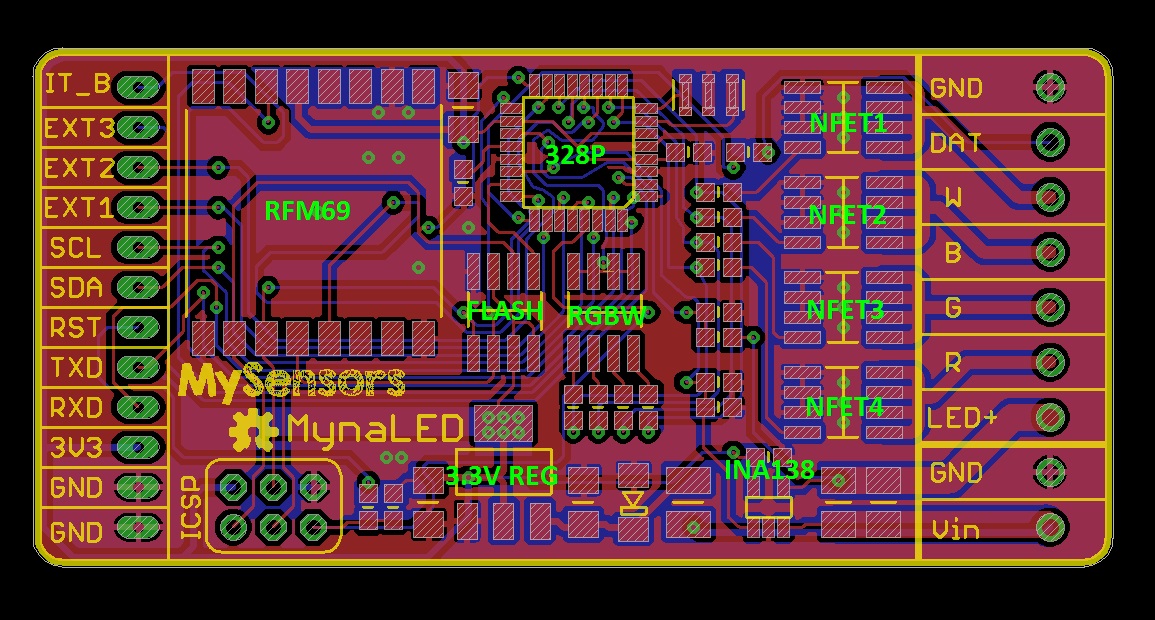
Now let's final check the board and make the order !
-
Cool! Have you considered the MYSX connector?
-
Hi everyone,
I was close to buy a Fibaro complete set until I discovered MySensors Project. This project is really cool, I'd like to thanks everyone involved in it. I'm more an hardware guy, so I wanted to do a little sensor board that I can spin for 10 units or something like that to cover the needs of my apartment.
I decided to design a little sensorboard that fit on the back of a 2AA holder ( 58*33mm) that can fit all the sensors I would need. The idea is that once you have the PCB, you solder just what you need on it. But it can work with every sensors populated also.
After days of reading and comparing sensors / supplies solutions, these are the specifications I choose:
- Works on two AA batteries in series. Use an MCP16252 to generate 3.3V that is enabled by default but can be switched off (and so bypassed) by the MCU if the batteries voltage is enough.
- Battery voltage monitored by the MCU
- Arduino compatible atmega328p design. External 512k spi flash for future OTA
- RFM69HCW design. It seems this is better for range and overall reliability ?
- PIR sensor: Custom design with the E931.96
- Light sensor: TSL2591
- Temp/Humidity sensor: Can use SI7020, HTU21D, and SHT2x range from sensirion
- Pressure sensor: BMP280
- IMU: MPU6050, MPU9255
- Two RGBW 5050 LEDs
- Extension connectors that can be used to stack extension board on top of the PCB.
I estimated it could achieve 1 to 3 years of battery life. I try to implement every hardware energy saving possibilities (hardware interrupts, ...).
Have you any advice or comments on this ? I have zero experience with MySensors and these sensors, so that could help. Here is a preview of the PCB : (routing still in progress). If anyone would like to see the schematics, I just need to clean it to release. This will be open source hardware if anyone is interested.
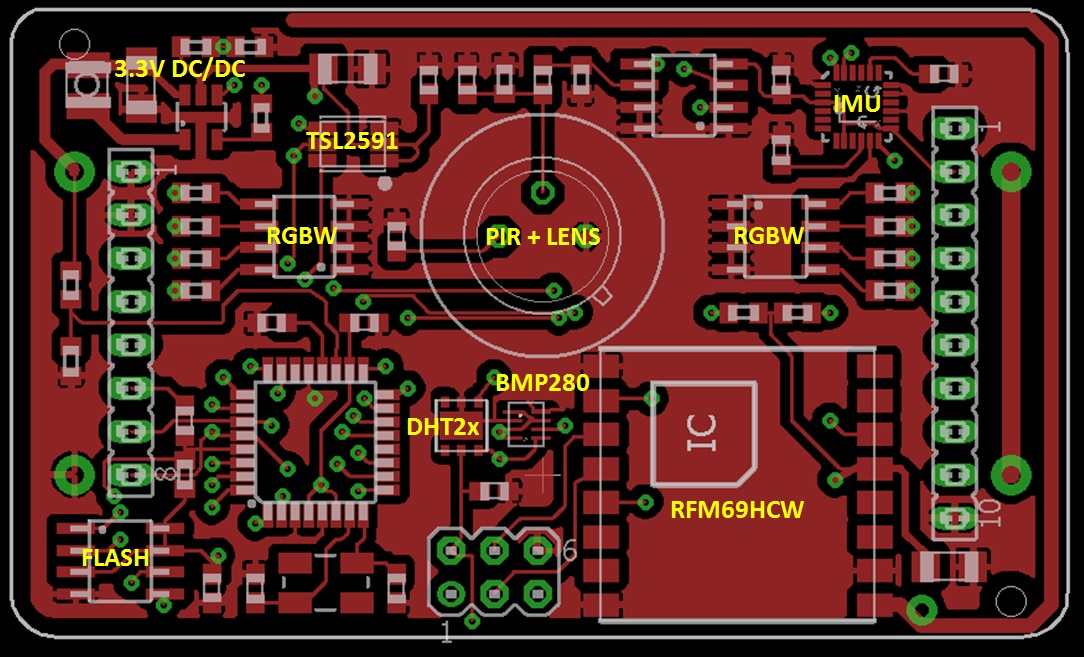
Myna
Hi there,
Is there a driver available for the PIR E931.96 interface chip? There are sources available for an arm-processor, but for atmel328?
PIR-sensor LHI968 as used in an application note of Excelitas is available at aliexpress for aprox 2 Euro. -
Hi there !
I'm waiting for the boards and some components. Then I will be able to test, and write drivers (E931.96, no driver at the moment) and software for the system.
I'm cleaning my files / schematics to release everything.
I wasn't really aware of MYSX connector. After looking the PDF specs, It's not even clear how many pins it has, it look like every new versions add some pins ? It could be considered for a future version.
The thing is I have never worked on an home automation before, nor mysensors. So the idea here was to design a few board that are enough for my basic project needs (RGBW lighting, low voltage halogen lighting, multiple multisensor, Jeedom RPI controller). At the moment I don't really know what flavor of extensions I would one day like to add to the boards so I tried to breakout a maximum of pins, with clear silkscreen, even if it makes the boards bigger. I see this as a dev project to dive into mysensors. Future rev will probably follow if it works for me.
Myna
-
PCB and some components are are now arrived ! PCB are from Elecrow, I'm pretty satisfied with the result and silkscreen.
Hopefully I will be able to start some tests this weekend.
**2AA Multisensorboard: **

**RGBW Dimmer board: **
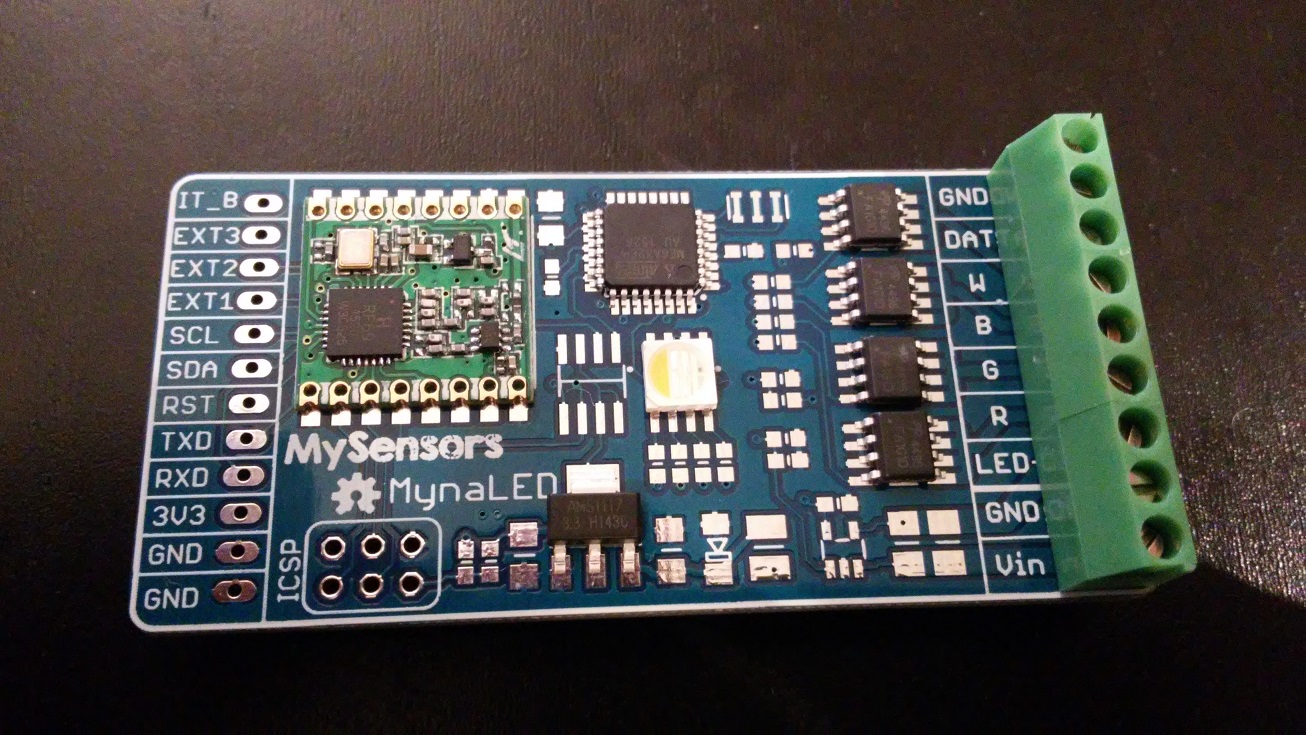
**Raspberry Pi Serial Node : (fit in this little plastic case) **
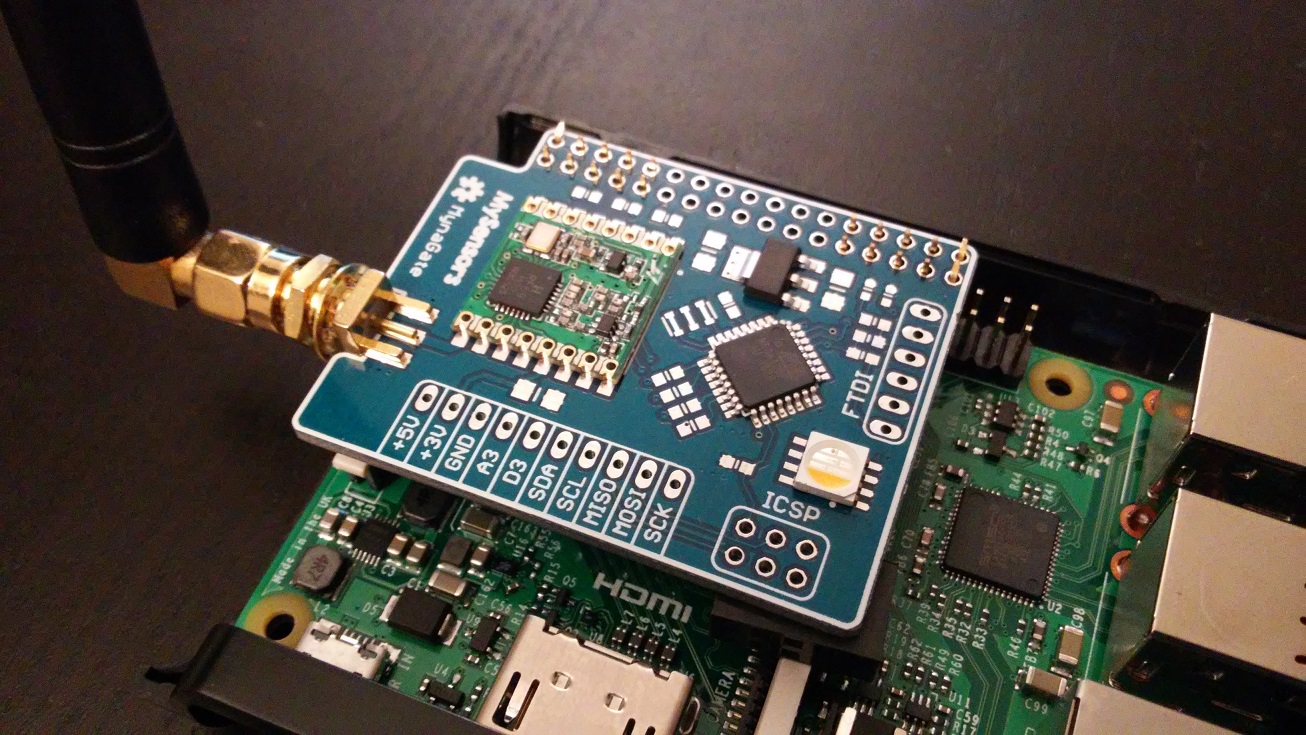
Myna
-
That looks promising! Is there any chance you'll release the files for others to use? I'm very interested in the dimmer module. And I'm glad there's more people using the RFM69. I thought I was a lone ranger in that respect.
@DavidZH Of course, this is an openharware project, everything will be released ! I can share the files in the current state but this is early dev state: I've already found two errors in the PCBs.
After some soldering and fiddling with software I have the gateway talking to one sensorboard : I'm excited !
-
Testing the folowing hardware:

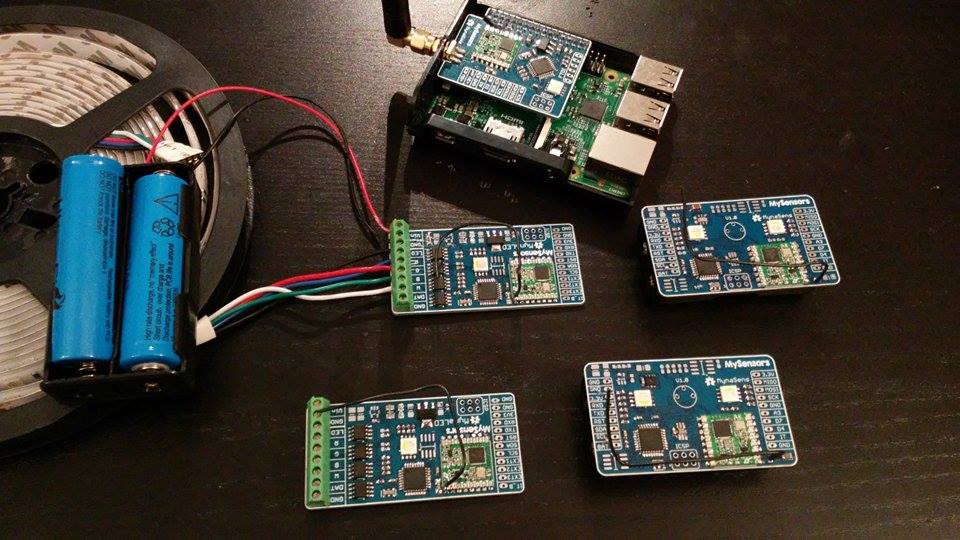
It seems to work (basic hardware test). It still miss the DC/DC convefter and PIR sensor.
However, I have a very strange problem with RFM69:
gateway -> node rfm communication seems to have a very good range (Even with no antenna on the gateway, work everywhere in my appartment). But node -> gateway dont work past 30 ou 40cm. Tested with same 3.3V regulated supply. Any idea?
Thanks!
-
